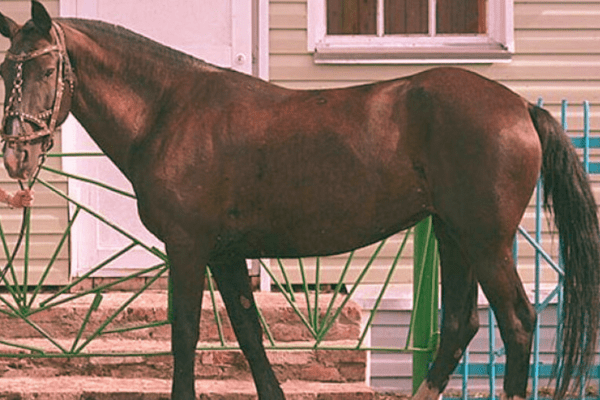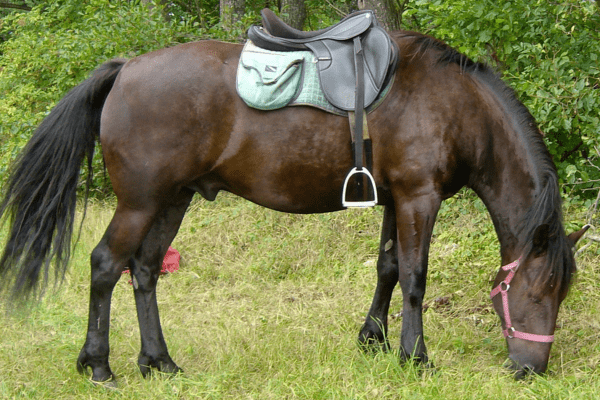Originating from the rugged terrains of Siberia, the Kuznetsk Horse emerges as a breed of notable distinction and acclaim in Russia. Esteemed for its pivotal contribution to the lineage of several Russian equine breeds, the Kuznetsk Horse is characterized by its exceptional lifespan and robust fertility. This brief introduction aims to explore the defining traits and historical importance of the Kuznetsk Horse, a symbol of the enduring spirit and vitality inherent to its Siberian roots.
History:
The Kuznetsk Horse, an esteemed Russian breed rooted in its rich equine history, takes its name from its place of birth–Kuznetsk Coal Basin. This area, bordered by Kuznetsk Ala-Tau and Salair mountain ranges, was pivotal in shaping this breed’s identity; throughout history this remarkable journey has seen various developmental phases and bloodlines influence this journey of development and refinement.
Historical Origins: The Kuznetsk Horse has existed in Russia for approximately 200 years. Initially, these horses were known for their resilience and utility in navigating Siberian landscapes before formal breeding programs were instituted.
Onset of Organized Breeding: Siberia did not witness organized breeding initiatives until the mid 19th century, marking an important shift in equine breeding practices with emphasis placed on improving quality and traits within local breeds such as Kuznetsk Horses.
Early Challenges: The early history of the Kuznetsk breed was fraught with difficulty and misfortune, lacking official documentation and breeding strategies for selective breeding strategies; due to this fact, initial breed specimens exhibited various conformational discrepancies; however, these horses were known for their hardiness and low maintenance requirements, essential traits needed in Siberian environments.
Genetic Improvement and Diversification: One major development for the Kuznetsk Horse came with the establishment of formal breeding programs. These introduced new genetic lines from well-recognized breeds like the Thoroughbred, Orlov Trotter, and American Standardbred that not only enhanced its qualities but also contributed significantly towards improving local Siberian horse stocks.
Regional Variations: Today, the Kuznetsk Horse can be divided into two primary varieties that differ by breeding regions. The northern type, influenced by Belgian and Anglo-Norman horses, features more robustness while its southern counterpart boasts greater resilience and agility.
Contemporary Significance: The Kuznetsk Horse remains an icon of Siberian heritage and adaptability in equine breeding. From regional workhorse to an eclectic breed enriched by different genetic influences, its journey exemplifies the ever-evolving process of breeding as well as conservation efforts and breeding development initiatives.
Characteristics of Kuznetsk Horse:
The Kuznetsk Horse is famed for its distinct attributes, such as strength, endurance, and resilience. Bred for centuries by Siberian conditions to thrive under adverse climate conditions – making each individual horse distinctively valuable! It embodies exceptional qualities that have long made this breed one of the world’s premier breeding programs.
Robust Strength and Endurance: One defining feature of the Kuznetsk Horse is its combination of superior strength with exceptional endurance. These horses are celebrated for being able to complete laborious tasks for extended periods without showing signs of weakness, attesting to their robust constitution.
Minimalistic Needs: Remarkably low maintenance requirements allow the Kuznetsk Horse to flourish with little upkeep required – an effect of its centuries of adaptation to limited resources in its native habitat.
Impressive Pulling Power: The breed stands out with its impressive pulling capacity, making it suitable for tasks requiring significant physical exertion. This characteristic stems from both its muscular build and natural stamina.
Elegant Movement: Despite their strength and power, Kuznetsk Horses display graceful and efficient movement that adds greatly to both their working abilities as well as suitability for various equestrian disciplines. This quality distinguishes them from many breeds.
Structural Characteristics: Physically, the Kuznetsk Horse stands out with its substantial skeletal structure and well-formed joints. It boasts an extended, wide croup and powerful muscles which showcase its power and agility; furthermore, its deep rib cage retains an indented profile which gives the animal its robust physique.
Size and Stature: Standing an average height of 15.3 hands at its withers, the Kuznetsk Horse exudes an intimidating presence. With its sturdy build and menacing nature, this breed exudes power.
Adaptability and Endurance:
One of the Kuznetsk Horse’s most remarkable qualities is its ability to thrive in harsh environments. Equipped with excellent endurance, Kuznetsk Horses were essential agricultural and transport animals in their native region, making them indispensable agricultural and transport tools.
Uses:
Historically, Siberian horses were employed for light draft and agricultural work as well as transportation over difficult terrain in Siberia. Today they remain an indispensable work horse but they also enjoy recreational riding opportunities due to their rareness and conservation efforts.

Conservation Status:
The Kuznetsk Horse is considered an endangered breed and efforts are being made to maintain its genetic heritage through breeding programs and conservation initiatives. As an integral part of Russia’s equine history, this rare breed must survive.
Cultural Significance:
Within its native region, the Kuznetsk Horse holds a prominent place in local culture and history. It symbolizes the resilience and strength of those who have survived centuries in Siberian landscapes.

